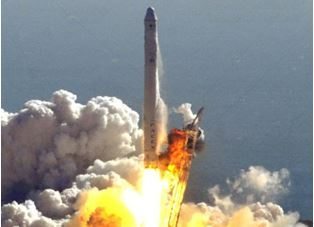

The SpaceX Starship rocket lifts off from the launchpad during a flight test from Starbase in Boca Chica, Texas, on April 20, 2023.īut on-screen graphics in the SpaceX webcast showed three of the 33 Raptor engines had either shut down moments after liftoff or never ignited in the first place - two in an outer ring of 20 fixed Raptors and one of the 13 central steerable engines. With its engines gulping some 40,000 pounds of propellant per second, the rocket initially climbed straight up and then gracefully tilted over onto an easterly trajectory toward the Florida Straits. The engines quickly throttled up to 16 million pounds of thrust - twice the power of the current record holder, NASA's SLS moon rocket - and the gargantuan rocket majestically climbed away from SpaceX's "Starbase" launch facility. EDT, two minutes later than planned because of minor technical snags. Thrilling thousands of area residents, tourists and journalists looking on from nearby South Padre Island, the 33 methane-fueled Raptor engines powering the Super Heavy first stage roared to life at 9:30 a.m. So you never know exactly what's going to happen, but as we promised, excitement is guaranteed! Starship gave us a rather spectacular end to what was truly an incredible test." "Now this was a development test, this was the first test flight of Starship, and the goal is to gather the data and as we said, clear the pad and get ready to go again.

The SpaceX Starship rocket explodes after launch for a flight test from Starbase in Boca Chica, Texas, on April 20, 2023. "Starship just experienced what we call a rapid unscheduled disassembly, or a RUD, during ascent," said SpaceX engineer John Insprucker, serving as a launch commentator on the company's webcast. SpaceX's huge Starship rocket, the most powerful ever built, blasted off on an unpiloted maiden flight Thursday and successfully flew for more than two minutes before tumbling out of control and exploding in a cloud of flaming debris. This material may not be published, broadcast, rewritten or redistributed without permission.SpaceX's Starship, most powerful rocket ever built, tumbles and explodes minutes after liftoff 02:42 15, 2023, at the Baikonur Cosmodrome in Kazakhstan. The Soyuz rocket is launched with Expedition 70 NASA astronaut Loral O'Hara, and Roscosmos cosmonauts Oleg Kononenko and Nikolai Chub, Friday, Sept. Credit: Roscosmos space corporation, via AP In this photo released by Roscosmos space corporation, from left, NASA astronaut Loral O'Hara, Roscosmos cosmonauts Oleg Kononenko and Nikolai Chub, crew members of the new mission to the International Space Station, ISS, wave prior the launch of Soyuz MS-24 space ship in Russian leased Baikonur cosmodrome, Kazakhstan, Friday, Sept. The Russian rocket carries Roscosmos cosmonauts Oleg Kononenko, Nikolai Chub and NASA astronaut Loral O'Hara. In this photo taken from video released by Roscosmos space corporation, the Soyuz-2.1 rocket booster with Soyuz MS-24 space ship carrying a new crew to the International Space Station, ISS, blasts off in Russian leased Baikonur cosmodrome, Kazakhstan, Friday, Sept. The Soyuz rocket is seen in this 90-second exposure as it launches with Expedition 70 NASA astronaut Loral O'Hara, and Roscosmos cosmonauts Oleg Kononenko and Nikolai Chub, Friday, Sept. In this photo released by Roscosmos space corporation the Soyuz-2.1 rocket booster with Soyuz MS-24 space ship carrying a new crew to the International Space Station, ISS, blasts off in Russian leased Baikonur cosmodrome, Kazakhstan, Friday, Sept. They join seven station residents from U.S., Russia, Denmark and Japan.īy the end of his yearlong stay, Kononenko will set a new record for the longest time in space, more than a thousand days. It's the first spaceflight for O'Hara and Chub, while mission commander Kononenko is on his fifth trip to the orbiting outpost. Their stay was extended from six months to a year when their Soyuz capsule developed a coolant leak while parked at the station. That crew-also two Russians and an American-will ride it home later this month. The trio was supposed to fly to the space station last spring, but their original capsule was needed as a replacement for another crew. O'Hara will spend six months there while Kononenko and Chub will spend a year. NASA astronaut Loral O'Hara and Roscosmos cosmonauts Oleg Kononenko and Nikolai Chub blasted off from the Baikonur Cosmodrome in Kazakhstan and docked at the station three hours later.


 0 kommentar(er)
0 kommentar(er)
